|
Hey yall (years of living in Oklahoma has broken me, I now say “yall”). Hope your weekend was an epic one. My family and I met Stan Lee, it was literally a dream come true. He was such an awesome guy and chuckled at the fact that we named our son Logan after his character “Wolverine.” My fiancé met Lucious Malfoy from the Harry Potter series, so this was a weekend to remember. This weekend really made me realize how much I appreciate my life, my clients and YOU! If your reading this then I am talking about YOU specifically. I appreciate you taking time out of your day to read my blogs, as a token of appreciation I am now leaving the blog topics open to you, the readers. Recently I was asked to write about what diets/foods are best for weight loss. While this is such a broad subject I will break it down as best as I can. First off I am a strong believer in changing your eating habits and keeping a calorie deficit to lose weight, anyone who has trained with me will tell you I am AGAINST specific diets. While these fad diets as I call them do work, eating the same foods daily becomes repetitive, boring, and discouraging. Also science has shown many of these fad diets to have adverse effects on long term health. For example, Low and no carb diets are one of the current fads, while these diets can help you lose weight, they can also affect your hormones and metabolism. When the body has little carbohydrates, insulin levels lower, the drop in this essential human hormone can alter our metabolism and hormone balance. Also, fad diets have a high rate (80%) of weight regain once the dieter has finished following it. One reason people see a rapid weight gain when they begin eating normally from a no/low carb diet is simple; every gram of carbohydrates has 4 grams of water. This means the 10 lbs. you lost in 3 days from cutting carbs was actually water weight and not actual fat loss. Now my second point, while all these specific diets claim to make you lose a ton of weight faster than the others, science proves otherwise. In a study between the Atkins, Ornish, Weight Watchers and Zone diets, scientists concluded “no statistically significant differences between diets.” in fact the study showed the decrease in inches, weight, and overall health to be similar with each diet. Overall health, size and weight did improve in every participant at the conclusion of the year. One interesting fact about this study, the participants had a hard time following these diets for a duration of two months, much like my earlier point of fad diets being discouraging/boring to follow. Back to my topic, if specific diets aren’t the answer then what is? This is actually more simple then you think, have a caloric deficit big enough to reach your goal. 3,000 Calories is equal to 1 Lb., so every 3,000-caloric deficit we have we lose a lb. The trouble we as humans have is eating the correct food. Many of us tell ourselves that we don’t have time to cook meals, so instead we eat fast food thinking it is healthier than it actually is. For example, a grilled chicken sandwich meal from McDonald’s, while grilled chicken sounds healthy is actually equivalent to 720 calories assuming we drank water instead of pop. Now for someone whom is on a 1600 calorie plan, that is almost half of their daily allotted calories. So, to answer what foods are best to eat, stick with low calorie foods that have the proper nourishment values to support our lifestyle. Here is a list of recommended foods per nutritional value.
These foods are all high in their respective daily values and when proper portions are consumed they are also friendly on the calorie consumption side. Pair these foods together to make a low calorie nutricious plate, be sure to stay aware of the serving sizes as this will effect the amount of calories consumed. Like what you read? Subscribe to my blog and stay informed on trending fitness topics. Plus receive a FREE copy of my Ebook; 15 Fat Incinerating Workouts.
0 Comments
Hey everyone! Hope your week is going great! I don’t know about you but I am ready for this weekend, we have tickets to the Dallas Fan Expo where we will be meeting one of my heroes the great Stan Lee (creator of Marvel Comics). Side note: outside of being a trainer I am the world’s biggest nerd. So, this week I had a new client ask me what protein powder they should purchase, after talking with me about their eating habits I suggested them not to purchase protein powder. The reason I didn’t recommend protein was they are getting their daily protein needs from their food consumption. This got me thinking, how many people are taking protein powder and don’t understand why they are doing it? This inspired me to break down the protein powder supplement to help YOU decide if you need protein powder within your diet. We have all been guilty of this at one point or another, I bet we have all had our protein shake after our workout with the thought of losing ‘gains” if we didn’t consume it fast enough. So, what exactly does protein powder do? Well protein powder is simple, it is a convenient way to give your body mass amounts of protein at once. Protein is the biggest component when building muscle, it is used to build and repair broken down tissues, this is important due to exercise breaking down our muscles, the body then repairs them and this is what causes us to develop bigger, stronger muscles. Protein is also a building block of hormones, bones, cartilage, and skin. So, we can safely say protein is a necessity within our diet. We know we need protein, so how much truth is there in needing protein immediately after your workout? Very little; yes the body needs protein to help recover but what it actually needs after an exercise is carbohydrates. Carbs are what the body runs on! They are our primary source of fuel, during any type of training session our body uses our carbohydrates to run (much like a car with gasoline). When we run our car on empty we can no longer drive without risking damaging the engine, the body is the same way except instead of gasoline we use carbs. Studies suggest after exercise our body needs a 5-1 ratio of carbs to protein. That 20 grams of protein shake you just took in, the body needs 100 grams of carbs to get its proper carb to protein post workout ratio. Many people consume protein powder to help hit their daily protein needs, what many people don’t know (I was there too) is how much protein do they actually need.
Now that we know the recommended daily protein needs lets figure yours out! First, find your category out of the four recommendations. Next calculate your weight in kilograms since these recommendations are measured in this unit. Remember a kilogram is equivalent to 2.2 pounds, therefore a 230-pound man is 104.5 Kilograms. You find this number by dividing your weight by 2.2, next multiply your weight in kilos by the recommended daily values. For myself I consume 1.5 grams per body weight as my training regimen requires it. I then multiply 104.5 by 1.5, my protein goal per day is to consume 156 grams of protein. Now you have your protein goal for the day, it’s time to figure out if protein shakes are right for you. For myself I do not consume protein shakes unless I have no access to food-which is rare, my fiancé makes sure I’m always fed. Apparently I’m grumpy when I don’t eat. My reasoning for not consuming protein shakes is simple, I get my daily needs from the foods I eat. On a typical day you should be eating 3 meals and at least 2 snacks. If your 3 big meals have some form of meat you are getting at least 40 grams per meal. 3 chicken breasts are around 126 grams of protein (42 grams per 8oz), along with your meat your sides and snacks throughout the day have protein as well, for example one cup of pinto beans has 41 grams of protein-give or take- for myself with 3 pieces of chicken breast and a cup of pinto beans I have already exceeded my daily protein needs. For this reason, I do not purchase or take protein powders. Now don’t think I am against protein powder, I do believe it is good in certain circumstances. For people whom do not have much time or forget to eat, I highly recommend buying and taking protein powder. If you have a huge gap between your workout and your next meal, drink a protein shake, it has calories to help fuel your body until meal time. If you eat pretty consistent and close to when your workout ends then there is no need to purchase expensive powders, your food has more than enough protein to reach your daily needs. If you find you do need to take a protein supplement I recommend taking whey protein as it is a complete protein (has all 9 of the necessary amino acids required for a healthy diet). If you don’t have specific goals such as needing a high calorie powder then a generic cheap brand will do the trick, protein is protein. For the most part you will get the same benefits out of the cheaper more cost-efficient protein powder as its more expensive counterpart. Like what you read? Subscribe to my blog and stay informed on trending fitness topics. Plus receive a FREE copy of my Ebook; 15 Fat Incinerating Workouts. Hey guys and gals! I am currently on baby duty hoping my son falls asleep soon. As I’m laying with him I can’t help but feel guilty for the cheat meal I just had (Mexican food, it gets me every time). Every week after my so-called cheat meal I feel a sense of guilt within my stomach, in this case I think it’s the salsa. I’m sure many of you can relate, the satisfying taste and feeling while devouring your heavily anticipated meal followed almost immediately with the feeling of guilt and regret. Feeling this way really stinks, right? Whelp that got me thinking, just how harmful are these weekly cheat meals? First off if you didn’t know, a cheat meal is any food that you consume that is outside of your normal eating habits or diet. For example, if you are on a no carb diet (which I am against, the weight loss is mostly due to water secretion from the body) then your cheat meal would be something like pizza because it is high in carbohydrates and out of your normal weekly eating habits. Now that we all know what a cheat meal is, I’m sure we can all relate now. So exactly how bad are cheat meals? Not bad at all if you are following your diet properly, I actually highly recommend having a cheat meal once a week. Anyone who has dieted hard for a long period of time knows it is HARD to not cheat, more than anything I highly recommend cheat meals to help with the psychological aspect of weight loss. Working out is only half the battle, nutrition is the other, if we in our mind hate our diet we will correlate this with exercise, thus making us hate the gym and discourage us from reaching our goals. The biggest struggle people find when losing weight is feeling discouraged, this makes us not want to continue. So why would we do something that will eventually lead to us quitting. The cheat meal is meant to have something to look forward to, as a reward for your hard work throughout the week -because let’s face it, after a week without junk food, you deserve it. If our will stays strong and we can keep from getting discourage, we can achieve our goals. From a scientific standpoint, there is nothing that supports the use or non-use of a cheat meal to reach one’s goals. However, a scientific study done on 2 groups of males all similar in physically and following the same exercise routing had one group on a strict diet without “cheat meals” and one group that was allowed a cheat meal every week. At the end of the study the group allowed to have a cheat meal lost wore weight then the strict diet group. It was never proven that the cheat meal was in fact the reason for the increased weight loss. From this study, I think it is safe to say a weekly cheat meal will not harm your weight loss. It’s funny how the mind works, we will crave things we normally don’t just because we know we can’t have it. It’s like children who only want to play with something someone else is playing with. So, to those out of the ordinary cravings I say give in! just be sure your eating habits are 90% within your diet and 10% cheating. Be sure you are having a cheat meal and not a cheat buffet/day. Remember if you ingest a crazy amount of food like let’s say 6000 calories, then you are eating 2 lbs. worth of food! Be smart and realistic, but always-always enjoy those meals! :) Like what you read? Subscribe to my blog and stay informed on trending fitness topics. Plus receive a FREE copy of my Ebook; 15 Fat Incinerating Workouts. Hey everyone, hope your weekend was a memorable one. We took a trip to Kansas to watch the Bacone College wrestlers compete in the National tournament, it was a great time and reminded me why I don’t wrestle anymore- there was some mean guys there! Anyways Around this time every year we see a rise in pregnancy, im assuming due to New Years and the Superbowl (I bet pregnancy in Foxborough is at an all time high). Heck the pregnancy bug has even been caught by a few of my clients, and I'm hoping my fiancé catches it as well! (kidding, but not really). So to my women out there, just because your pregnant doess that mean you should stop exercising? Absolutely not! In fact exercise during pregnancy is beneficial to yourself as well as your child. The positive physical and mental benefits from regular exercise during pregnancy far out weigh any risks, in fact exercise should not just be promoted but should remain a crucial part of your pregnancy. I underdstand being tired and sick while pregnant, I saw it first hand for 9 months (thanks babe). These feelings make you not want to exercise, but what if I told you exercise would help rid you of many “pregnancy symptoms.” Studies have found the use of exercise during pregnancy to be associated with fewer symptoms of the usual pregnancy sickness. Exercisers experienced a significant decrease in shortness of breath, headaches, hot flashes, back aches, and vomited less frequently than their sedetary counterparts. So how exactly should you exercise during these 9 months? Here are the guidelines of The American College of Obstetricians and Gynecologists
What about the dangers of exercise? While following the guidelines should ensure you train safely during this time, there are always risks. Immediately terminate your exercise if any of the following occurs
What about those whom didn’t exercise before becoming pregnant? Fear not, it isn’t just recommended to begin a program but it is actually beneficial to your child to do so. A study done on women whom were pregnant but lacked exercise before hand concluded that exercise actually helps the child to grow while in the womb. Every child was both heavier and longer then the control group, scientists attribute this to the lean body mass to fat ratio of the mother. Now this doesn’t mean to get out there and start a crazy workout plan, I suggest a moderate exercise plan that incorporates weight lifting. Keep the weight light and finish each set before it becomes to strenuous on the body. The goal is to get a good exercise and sweat, not to hurt ourselves or cause unnecessary strain on the body. If your pregnant or are thinking about it stop stressing, there is no reason to quit your exercise regimen. Exercise will not only help keep your “baby weight” under control but it will help the development of your little bundle of joy. Lets face it, nobody wants to put on an extra 30-40 lbs, stay active and keep the baby weight gain low. Before continuing or starting a workout program be sure to speak to your doctor. I recommend hiring a qualified trainer wqhom knows about pregnancy for the months you are pregnat If you have any questions or need help making a program feel free to shoot me an email, Id love hearing from you [email protected] . From Soaring Eagle Fitness, congratulations to all the expecting parents, and a special congratulations to our very own Courteni and Un-named (she has yet to announce) on their little bundles of joy! Like what you read? Subscribe to my blog and stay informed on trending fitness topics. Plus receive a FREE copy of my Ebook; 15 Fat Incinerating Workouts. Hey everyone, I hope you had a great week and are enjoying this weekend! Last week myself, my fiancé and son, were able to watch the Bacone Wrestling Team (Our Alma Mater) qualify 9 of their wrestlers to the National tournament! It was actually pretty awesome to see. We are excited to see them all compete at the National tournament this weekend. In this tournament, I saw a lot of injuries, kids tearing muscles and dislocating joints (wrestling is a brutal sport) and this really made me think about injuries within the gym, primarily how we can prevent it. While we can practice safe workouts and perform heavy movements with a spotter, even if we performed every movement as safely as possible there would still be one key to injury prevention missing, stretching. If you’re like me then you hate stretching, you probably find it to be time consuming and would much rather spend those 15 minutes of stretching on ab work or cardio. Even knowing better I still struggle to stretch everyday like I should, but I feel the difference in my body when I do finally stretch- and it feels a lot better. So how does stretching prevent injury? Well, stretching does one thing, it improves our flexibility. It is extremely important to be flexible not just for our movements in the gym that require flexibility (squats, overhead snatch, etc.) but also to help our range of motion. You see the more flexible we are the farther range of motion we have in our joints. This will be vital to us if we are planning to be on a long-term fitness journey and not just in a fitness phase as I like to call it. With all the tension we place on our muscles through exercise we get that “tight” feeling, this is due to our muscles shortening and in turn becoming tight. When they are tight and called upon for a burst of activity they are unable to fully extend (due to the muscles being short and tight), this puts your body in immediate risk for joint pain, strains, and muscle damage-I am sure many of the weight lifters can relate to the joint pains. For example, overly tight hamstrings can cause you to not fully extend your leg or straighten the knee, this will affect your walking and eventually this will affect the kinetic chain (the human bodies movement). When the kinetic chain becomes affected our entire body suffers from it, for example if I pulled a muscle in my right quad (front of the thigh), it then hurts to walk normally, I will then change the way I walk to compensate for the injury. Now my hamstring and calf on the right side is being worked more than normal, this causes my hamstring and calf to become tighter, the tightness in those muscles then causes me to change my walking habits or adjust to a posture that does not aggravate the muscles, eventually this can lead to a more severe injury, all this from an injury that could have been prevented with stretching. Another way tight muscles can affect your everyday life is when performing sudden movements for example a movement that stretches your muscle at a sudden fast pace, such as running to grab your toddler from running in the street, is likely an injury will occur due to the muscles being short and tight from exercise. Stretching regularly helps to keep those muscles long, flexible and able to move to their full potential. You will be able to do sudden movements without needing to say, “o my back” or “I think I pulled something” afterwards. Your goals should be long term, fitness and health should not be a phase, it should be a lifelong commitment, stretching is something you should regularly do. Work on keeping your body limber and preventing injury so you can continue this journey throughout your life. Now that we know how important Stretching is, how do we stretch For a long time, it was popular belief to stretch before workouts, my coaches preached this to me, I preached it to my clients, but recent studies have shown injuries are actually more likely to occur while stretching when cold. The reason is the muscle fibers are still in a relaxed state (cold) and not ready for the strain placed on them from stretching, making it likely for an injury such as a pulled muscle to occur during stretching. It is my recommendation to stretch after your workout, the body will be warm, alert and you will be able to stretch the muscles you have just shortened and caused to be tight. If you’re stuck in your pre workout regimen where you stretch before and you absolutely feel the need to stretch before exercising I highly recommend doing dynamic stretches/warmup instead of static stretching. Dynamic Stretching Dynamic stretches/warmups are movements that get blood flowing to the muscles preparing them to perform, whether its in the gym or within a sport. For example if you were training abs and legs a dynamic warmup would we twisting walking lunges, these movements are preformed at a lower intensity with the idea being to activate the legs and core with this movement. Spend 5-10 minutes performing this warm up and getting the body physically ready while getting your mind mentally ready. For sports such as wrestling and football a dynamic warmup would be movements such as high knees, butt kicks, Cherokees, and cherry pickers these movements prepare the entire body for the stress that will be placed upon them during a game or practice. Proper Stretching
If you need ideas for stretching certain body parts check out my YouTube channel by clicking below, subscribe for weekly updated workout tutorials! Like what you read? Subscribe to my blog and stay informed on trending fitness topics. Hey guys It’s been a few weeks since my last blog, something decided to invade my household and get us all sick! I hope all your weeks have been going great! If you’re a Patriots fan I imagine you are having a great week, I can bet we all ate and drank a little too much this past weekend with the national holiday (Superbowl Sunday). This brings me to todays topic, just how important is nutrition to our progress. I cannot stress enough how important nutrition is, it is the staple of your weight loss or muscle gain. Losing weight or gaining muscle is 75% nutrition and 25% exercise. While you may go beast mode in the gym if you are not making the smart decisions in the kitchen your efforts will be in vain and ultimately waste your time, energy, and effort. Weight loss/gain is centered around a number, 3000. This is how many calories are needed to either gain a pound or lose a pound. A caloric deficit of 3000 will make you lose a pound, while a caloric surplus of 3000 will make you gain a pound. This means a balanced diet that adds up to -3000 will have you losing a lb no matter when that -3000 occurs. So, a 7-day diet and exercise regimen with a 430-calorie daily deficit will have you losing a pound in a week, it is the opposite for putting on weight. So, what is the importance of this to our progress? Well if you are working hard and killing yourself in the gym, pushing it day in and day out, burning 1000 calories every time you exercise on top of the 1500 calories you burn working and walking throughout the day then you have a daily caloric deficit of 2500. Now this is a great number, it is an excellent amount of burned calories but here’s the problem; you are currently -2500 for the day, let’s start adding our nutrition to the mix. You had subway for breakfast because its “healthy,” you got the Footlong steak and cheese because hey its subway, that is 960 Calories, then you eat a healthy snack Greek yogurt with granola (240 Calories), Lunch comes around and the boss bought the office pizza, you will just get 2 slices because you have been eating extremely healthy (700 calories), protein shake break time, because you know, “Gainz” (300 Calories). Finally, the gym is done its time for your last meal of the day and let’s face it you have worked hard, time for a healthy meal, Chicken (335) Broccoli (50) and rice (206 calories) of course just one serving a piece. Now Add it all together, 2,791 calories! That is what you consumed in one day while “eating healthy.” So, those 2 hrs we spent burning 1000 calories, a complete waste of time. Instead of having a caloric deficit like we are supposed to, we now have a surplus of 291 calories. Do you see the problem? While we may feel, we work hard enough to see progress, if we are not aware of what we are putting in our bodies we will never see the results we want. In this one day, had we ate ½ of the foot long and substituted the pizza for a chicken salad (200 calories) we would have a caloric deficit of 714 calories instead of a 291-calorie surplus. It’s the little Choices that make the biggest impact in our fitness journey. Below is an example of what 1500 calories can look like. A full days’ worth of calories or one meal, the choice is yours. Like what you read? Subscribe to my blog and stay informed on trending fitness topics. Hey guys hope your week is going great! I’m feeling better since my last blog, seeing the Packers lose like that helped me cope with the Cowboys season ending. I recently started up with a new client this week and while teaching the proper bench press technique I was asked what many others ask, how low should I go? The answer to this? Depends on how heavy you are going, when using lighter weight that is easy to control touch your chest to get the full range of motion, any time you perform the “chest touch” be sure to control the weight and incorporate just your chest to push the weight back up, when you begin shifting your shoulders and pushing them forward using them in the process to get the weight up you are no longer working just chest and are in fact damaging your shoulders and performing “bad form,” I suggest doing less reps or moving the weight down. It is important to control the weight and not rush through the movements as this will cause you to incorporate your shoulders. What About when using heavy weight for less reps? If you are not in a power lifting competition I suggest stopping 2-3 fingers above your chest, unless you are a competitive weightlifter there is no reason why 400 lbs should be laying on your chest. I know it is a common misconception that doing this hinders your strength, but a study done in The Journal of Strength and Conditioning Research confirms “partial reps” do not affect your strength levels but in fact “suggest that partial range of motion training can positively influence the development of maximal strength” (JOURNAL OF STRENGTH AND CONDITIONING RESEARCH Vol. 18 Issue 3). The Verdict: When lifting lighter weight stick to slow and controlled reps that come down to your chest. When lifting the “big boy weight” let’s stop a few fingers above the chest! Like this? Subscribe for weekly tips and blog posts!
Hey guys hope your week is going great, we are a few days from the weekend and a few weeks from seeing the Cowboys win the Superbowl. Okay maybe that last part isn’t true but a man can dream, can’t he? Anyways a client of mine approached me today and asked me about fasted cardio, I’m sure if you have spent any time in the gym you have heard about this miracle fat loss known as fasted cardio.
So, what exactly is this fasted cardio? Fasted cardio is performing cardiovascular exercises on an empty stomach, this is mostly performed early in the mornings after your body has “fasted” throughout the night while you were hopefully sleeping. The belief is after a night of fasting the body’s glycogen stores are low (Carbohydrates are broken down into glycogen)-the body gets its energy from 3 main energy sources Carbs, fats, proteins (I will blog about this later). Hope I didn’t lose you, this will all make sense. Anyways because the glycogen stores are low the body shifts to using stored fat as its fuel, this is the belief behind fasted cardio. According to this theory 20 minutes of fasted cardio will burn more fat than a whole hour of cardio after eating. Sounds great doesn’t it? Well if this is true why isn’t every one doing it? Well fasted cardio is not a myth, it has been proven to burn 20 % more calories then cardio after eating (British Journal of Nutrition). The problem is there is no way to perfectly measure how long your cardio can be fueled by your fat storages before it begins looking at other sources for energy, primarily your proteins. You see your body was made to use carbohydrates for its primary energy source followed by proteins, this has a fancy scientific term but what it equates to is this; your proteins are your MUSCLES. I repeat your proteins are your muscles, you are not cutting down your fat storage, you are cutting down your muscle mass! Now I don’t know about you but I work really hard for every ounce of muscle in my body, I am not one willing to risk burning it all away over a risky shortcut. My recommendation, Wake up and eat! Load your body up with fuel for the day and do a HIIT (High Intensity Interval Training) program to burn more calories in a short amount of time. Muscle gains are tough to achieve, don’t risk throwing them away for this fad! Like What you read? Subscribe to my blog and stay informed on trending fitness topics. Hey! Looking to put on size but aren’t sure what supplements to take? Try Creatine. This supplement is scientifically proven to increase intramuscular phosphocreatine. What does this mean? Basically this is one of your energy systems, feeding Creatine to your body helps speed up the recovery time and the bodys ability to rapidly produce energy. This means more energy is being produced in the body when taking Creatine! More ATP (energy) production equals the ability to train harder, longer, and more intense, this in turn will get you results faster.
Yes, you read that right. Creatine will help you get bigger faster! Think it’s too good to be true? Chad Kerksick, Ph.D., an exercise physiology professor at Oklahoma University breaks it down even easier for us, “If you can lift one or two more reps or 5 more pounds, your muscles will get bigger and stronger.” Creatine gives us the ability to lift those extra 5 lbs. and lift those 2 more reps. Creatine, It’s not a myth, its science! |
Hi, Im Cesar
Hey there, thanks for visiting Soaring Eagle Fitness. Our goal is to help spread knowledge about fitness, not speculation or rumors, we want to only spread the truth. "Bro Facts" as I call them are far to common, we want to help you seperate the fact from fiction.
|

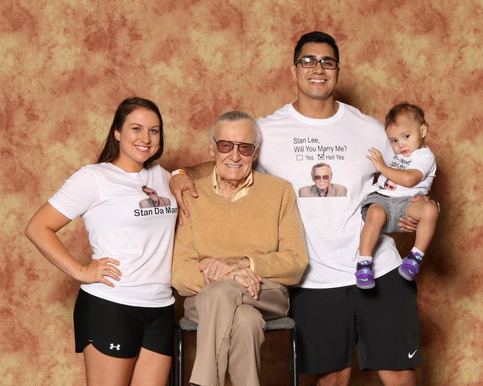


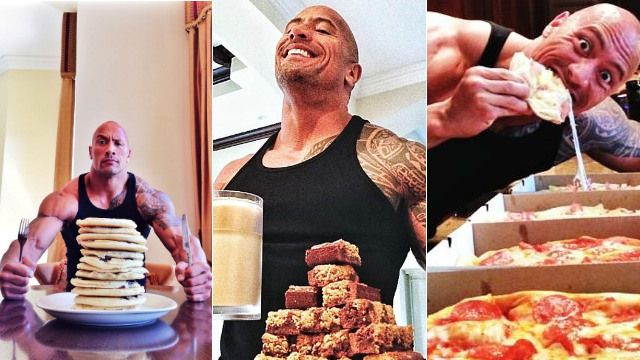



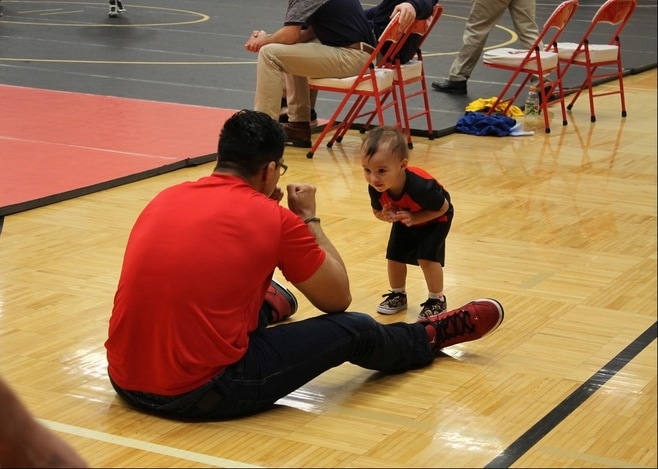
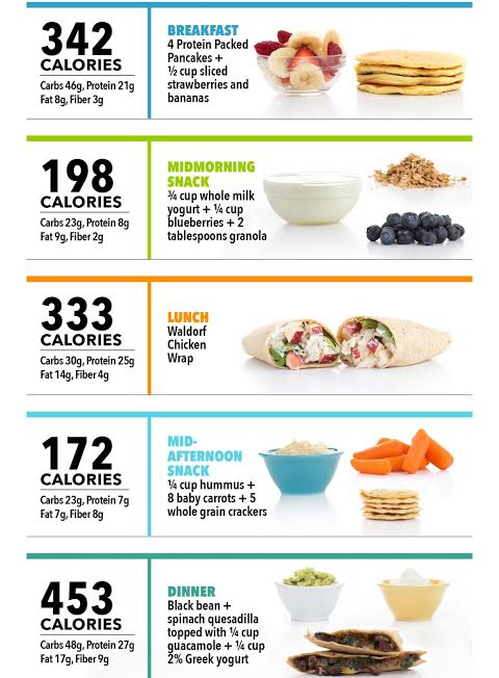
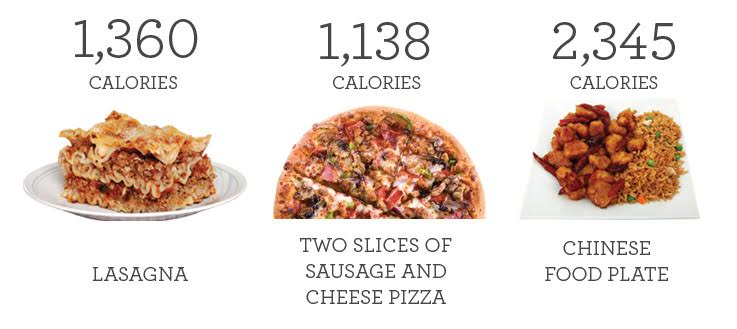

 RSS Feed
RSS Feed